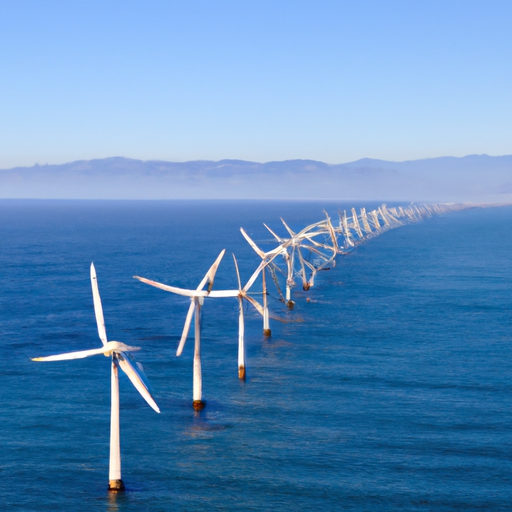An intriguing study by the Pacific Northwest National Laboratory (PNNL) has indicated that offshore wind farms could considerably revamp the Pacific Northwest’s wind power capabilities. By exploiting a 200-mile stretch off the coast of Oregon and California, such farms might boost the region’s wind energy production by up to threefold. This, in turn, could lead to billions of dollars of savings, effectively taking off the pressure from utilities, insurance firms, and ratepayers who currently shoulder climate change costs.
Leveraging Offshore Winds
Travis Douville, the report’s primary author, is an energy expert at PNNL focusing on wind energy integration. He expressed that the principal objective behind their research was to harvest an underutilized energy source, especially in areas with limited transmission capacity. Subsequently, offshore wind generation appears to have vast potential to aid in decarbonizing the West Coast United States.
Connecting to Onshore Power Grids
The report paints a future where floating wind farms are connected via large transmission lines to land-based networks in areas such as Coos Bay, Oregon, and Eureka, California. This vision is particularly significant as these connections can bring about substantial benefits for utility companies and ratepayers.
Examining Offshore Vs Land-based Wind Energy
According to Mark Severy, a PNNL researcher and report co-author, offshore wind turbines provide more consistent and less variable wind, enhancing power generation efficiency compared to land-based turbines. Notably, offshore wind also peaks during evenings, coinciding with solar energy dips, hence could fill in crucial energy supply gaps.
Infrastructure and Challenges Ahead
Successfully harnessing the full potential of offshore wind would require careful planning and feasibility studies. A primary concern is whether existing power transmission infrastructure could handle the additional energy load from offshore wind sources. In an earlier study led by Douville, it was found that with the necessary upgrades, Oregon’s current transmission lines could support an additional 3 gigawatts of energy – enough to power a million homes.
Future-Proofing Transmission Designs
The PNNL researchers modeled two different transmission scenarios, each representing a future where offshore wind farms, bolstered by robust transmission lines, would add a further 20 gigawatts of wind energy to the Western Interconnection. These scenarios employed high-voltage direct current (HVDC) transmission lines for power conveyance, which would then be converted into alternating current (AC) once on land. The models also showcased two ways to connect the wind farms – a radial structure, where each farm connects independently, and a backbone structure, where the farms first interconnect and then link to the shore.
Deciding on the Best Structure
When comparing the two, Severy explained that both scenarios could offer significant value, but the backbone structure presents unique advantages. For instance, in scenarios with surplus solar energy in California, the backbone grid provides an alternate route for electricity transmission to the Pacific Northwest.
Cost-Benefit Analysis
While either option involves considerable costs, the benefits surpass the expenses in almost all cases, as per Douville. The projected returns on investment ranged from $127 million to $6 billion, representing savings in power supply and avoiding the consequences of environmental pollution and climatic disasters.
Looking to the Future
A myriad of factors awaits scrutiny before any concrete offshore wind plans can be rolled out. Questions surrounding underwater transmission line stability, sea floor topography, material corrosion, and cable maintenance need to be addressed. Additionally, engaging with the stakeholders who rely on the ocean, such as fisheries and coastal communities, is also crucial. Despite the challenges, Douville stated that with early planning and coordinated efforts, the offshore wind solution would yield economic benefits for all stakeholders. These findings are expected to stimulate thought among policymakers and guide future development.
This project received funding from the National Offshore Wind Research and Development Consortium and the Bureau of Ocean Energy Management and its report is available courtesy of the Pacific Northwest National Laboratory.
